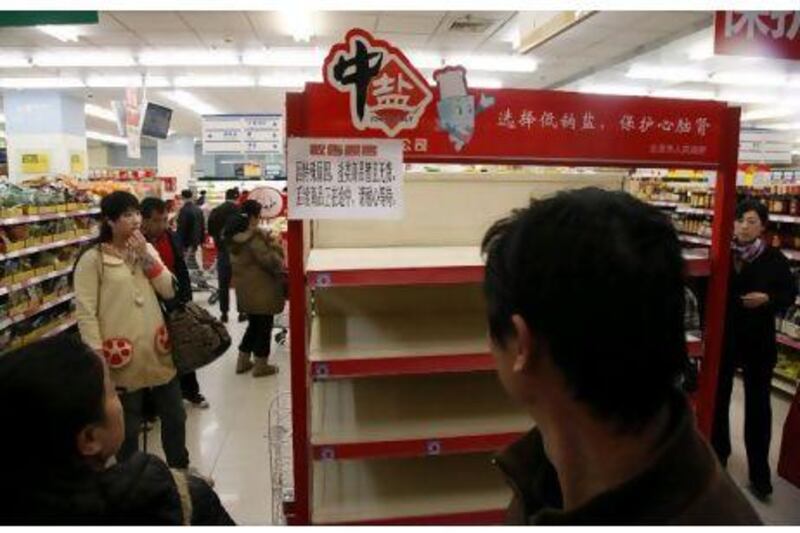Those currently at greatest risk of radiation exposure are the 50 workers inside the Fukushima nuclear plant where, so far, the highest measurement of radiation - 400 millisieverts - was 20 times the annual limit for nuclear industry employees and uranium miners, according to the World Nuclear Association. In a worst-case outcome, a build-up of radioactive isotopes would be released through an explosion or a leak in the containment vessels. If this occurs, winds blowing inland could potentially spread radioactive isotopes over a large area.
Q How much [radioactive] material is out there?
A So far, low levels of caesium and iodine are reported to have been released, mostly when engineers are venting pressurised gases out from the reactors. If engineers can finish the cooling process, then this radioactive material should be entombed within the reactor. If the cooling process fails, this material could leak out. This is the worst case scenario.
What level of radiation is dangerous to human health?
One hundred millisieverts a year is the lowest level at which any increase in cancer is clearly evident. A single dose of 1,000 millisieverts causes temporary radiation sickness, but not death. A single dose of 5,000 millisieverts would kill about half those receiving it within a month.
What are the health consequences of radiation?
Exposure to high levels of radiation can cause acute radiation syndrome, or radiation poisoning, resulting in substantial damage to human body tissues, premature ageing and possibly death. Prolonged exposure to lower levels is also associated with increased risk of ill health.
What are the symptoms of radiation poisoning?
The first symptoms of acute radiation syndrome are typically nausea, vomiting and diarrhoea. After that, a person with acute radiation syndrome may look and feel healthy for a short time, then become sick again with loss of appetite, fatigue, fever and possibly seizures and coma. This stage may last a few hours or several months.
What is being done to protect human health?
Japan has distributed 230,000 units of stable iodine to evacuation centres from the area around the Fukushima Dai-Ichi and Fukushima Daini nuclear power plants. The iodine has not yet been administered to residents.
* From Bloomberg News interviews with experts on radiation poisoning, nuclear reactor design and past nuclear accidents, and from official websites of the World Nuclear Association, the Science Media Centres of Japan and Australia, the World Health Organisation, the US Centers for Disease Control and Prevention, and the US Environmental Protection Agency.





